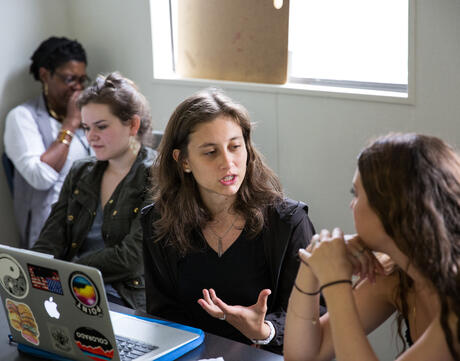
Foster Student Agency While Teaching Current Events
As educators, we want our students to understand what is happening in the world. Following the news is an important step in helping students to make informed choices about their lives, engage in their communities, and participate in our democracy.
However, we are also living through a teen mental health crisis, and news coverage often focuses on crises, such as war, climate disasters, and political turmoil. While these issues are important to learn about, being continuously plugged into news coverage of crises can also exacerbate young people’s feelings of stress or helplessness.
This article shares advice from the influential educator Matthew Kay on how to guide students to learn about challenging contemporary issues without feeling disempowered or overwhelmed. Kay’s writing focuses on conversations about race in the United States, but his advice can help with tackling other emotional or challenging current events. It is important to keep in mind when implementing this advice that students benefit from exploring options for engaging on issues they care about, but they should not be expected to identify with each issue they learn about or always decide to take action.
In his book, Not Light, But Fire, Matthew Kay writes:
While chaperoning a cross-country trip to the Grand Canyon, I met a wonderful history teacher named Cody Canning. During one of our conversations, he said, almost as an afterthought, “teaching is a lifestyle, not a career.” As I am a basketball coach, Sunday school teacher, and head of a youth-centered nonprofit, we chuckled at how much his comments seemed to validate my life’s choices. After all, during the school year, I can be found teaching someone, somewhere, each of the seven days in a week. But Canning’s statement subtly pointed out a clear spiritual benefit of our profession: that we, as teachers, know our sphere of influence. Our students. We read new books with them in mind. When our research hands us hard problems, we know that we don’t have to wrestle with them by ourselves. Most importantly, we recognize our power and know where we can use it.
When teachers become aware of a particular social injustice, we might think, I’ve got to do something about that! Then, seconds later, I’ll teach my students about it! From there, we launch right into designing a unit, a lesson, a threaded series of conversations. We never have to feel impotent–not when we remember our capacity to pull back life’s curtains and inspire the next generation. In short, teachers can always plug into a mission. Not all careers offer this satisfaction.
However, this same privilege can make our students feel like repositories of their teachers’ pain, confusion, or guilt. When hard problems are placed at their feet, they are often unsure where they can plug into a mission. A teenager who does not vote, has little money, and considers himself confined to the spaces that adult society has prepared for him might have much more trouble locating his sphere of influence. (116-117)
Matthew Kay goes on to offer the following advice for how educators can help students feel engaged rather than disempowered when participating in conversations about emotionally challenging current issues:
- Have students “locate their sphere of influence,” by considering the tools they have to create change, and ask them to use that knowledge to find “personal pathways to solutions.”
- Have students consider “new angles of inquiry” related to the issue, by conducting research, applying a new lens to the issue, or drawing connections between the issue and their own lives.
- Create pathways for students to share their ideas with a broader community when they are ready.
The following Facing History resources can help you incorporate this advice into your teaching of contemporary issues:
- Our mini-lesson Creating Healthy News Habits helps students take stock of their news habits, consider healthy ways to learn about current events, research a contemporary issue they care about, and determine one action they can take related to this issue.
- Our unit 10 Questions for Young Changemakers focuses on two cases of student activism: the 1963 Chicago Public Schools Boycott and the movement against gun violence launched by Parkland high school students in 2018. Both cases offer students the opportunity to reflect on and gain insight into their own civic participation in the world today.
- Our strategy Toolbox for Care helps students think about what “tools” they have access to that can help them take care of themselves and others in the wake of traumatic news.
- Our mini-lesson The Common Good in Times of Crisis invites students to explore how their actions and the actions of leaders can help to protect and strengthen communities in the face of climate catastrophes, conflict, or other public emergencies.
In addition, the following initiatives from our partner organizations give students the opportunity to publish their voices and perspectives:
- KQED’s Youth Media Challenges give students the opportunity to share their perspectives on contemporary issues in creative ways. You can learn more about our approaches to youth identity and voice in our joint event on October 4: If You Really Knew Me: Identity, Belonging & Multimedia Storytelling.
- New York Times Learning Network’s Student Opinion publishes student op-eds on issues that impact young people.
- StoryCorps Education resources offer strategies for students to record their own perspectives as well as oral histories from loved ones.
Using these resources, and keeping Matthew Kay’s advice in mind when designing lessons, can help your students stay engaged with current events in healthy ways this school year.

